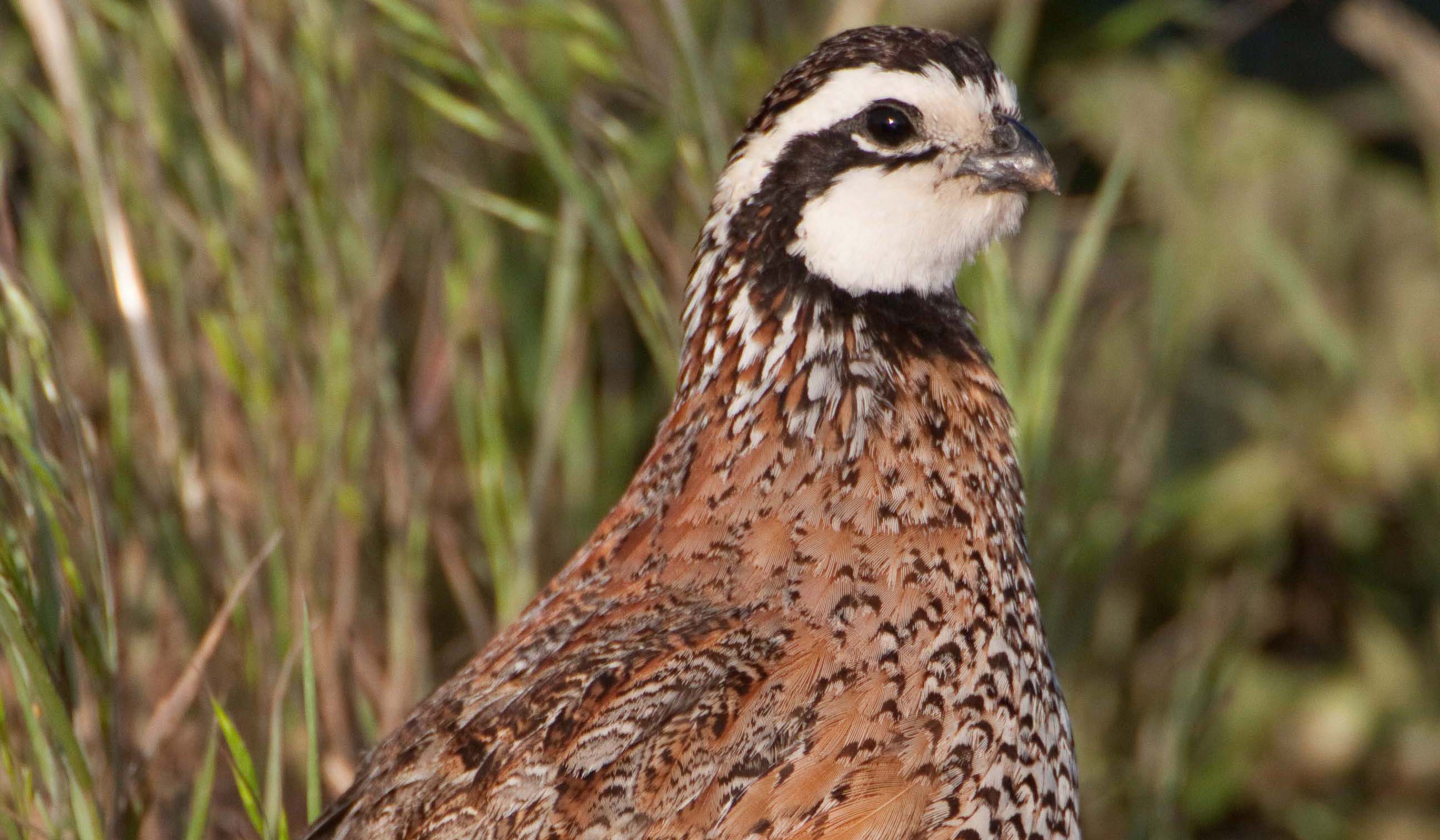HOME
The Rolling Plains Quail Research Ranch

By Russell A. Graves
“We’ll start a fire on both sides of this field and it will eventually burn together,” says Dale Rollins as we ride his side-by-side utility vehicle along the ranch’s interior roads and monitor the bustle of activity that’s around. Spread out around the 40-some-odd acre field, interns, researchers, and prescribed fire experts carefully coordinate their plan so that winter cured prairie grasses and diesel-fueled drip torch are brought together to create a conflagration that (albeit contradictory to conventional wisdom) will actually benefit this land and its inhabitants therein.
Rollins is articulate and animated as he talks. He’s a natural and relaxed speaker, a dedicated teacher and has often been called the Will Rogers of Wildlife Biologists. As such, he’s dedicated his entire professional career to understanding the idiosyncrasies of quail and the nuanced land management they require to thrive on harsh and often inhospitable rangeland environs.
When the technician inverts the torch and spurts out a stream of orange hot flame that can’t be fueled by more than a couple of tablespoons of diesel, the dried and dormant grass crackles and pops. Its stores of energy built from sunlight, rain, and photosynthesis turn to flame and heat in an instant.
Dirty white smoke drifts high and pushes lazily to the north as the fire advances at a safe and manageable pace across the field. I feel uneasy about the fire at first as it seems unnatural to start a blaze during the peak, late winter wildfire season and in country that’s been plagued with raging and out of control wildfires over the past decade.
Rollins and his crew; however, are studied and knowledgeable about fire science, and the flames behave exactly as his burn leader said it would during the safety briefing earlier in the day. A prefect mix of temperature, humidity, and wind speed make the fire behave predictably. When you can control the fire, it becomes a valuable tool for wildlife managers, and the team assembled to administer prescribed burns on the Rolling Plains Quail Research Ranch (RPQRR) this season wields their powers deftly.
To read more pick up a copy of the April 2018 issue. To subscribe call 940-872-5922.
HOME
Preparing Spring Gardens

By Hannah Claxton | Editor
The North Texas area is located within USDA Hardiness zones seven and eight. The zones are categorized by predicted low temperatures for winter and timing of the first and last frosts.
Zone seven usually has winter low temps between 0 and 10 degrees F with the average date of the first frost falling between Oct. 29 and Nov. 15 and the average date of the last frost falling between March 22 and April 3.
Overall, these two zones have similar climates and growing conditions, making the options for timing and variety within a garden very similar.
In these zones, cool-season crops should go in the ground in March, meaning that soil preparation should start now.
To read more, pick up a copy of the January edition of North Texas Farm & Ranch magazine, available digitally and in print. To subscribe by mail, call 940-872-5922.

HOME
Equine Vaccinations

By Heather Lloyd
Vaccinations are a critical component of maintaining the health and well-being of horses, especially in environments where they are exposed to other animals, such as in the sport, show and performance arenas. Horses, like all animals, are susceptible to various infectious diseases that can spread quickly and cause serious harm.
A routine vaccination schedule helps prevent the spread of these diseases by preparing the horse’s immune system.
To read more, pick up a copy of the November edition of North Texas Farm & Ranch magazine, available digitally and in print. To subscribe by mail, call 940-872-5922.

HOME
Wichita Falls Area Cattlewomen

Having herds on a controlled breeding schedule means that we have a predictable calving schedule, and while it’s only over a couple of months, for us it does fall right after the start of the year. I lobby annually to call ours the “Winter calving season”, but I am outvoted and my husband still refers to it as Spring. Unlike producers in our Northern States, we don’t have to contend with brutally harsh winter weather, and on those rare times we do, thankfully it is not for extended periods. Regardless of whether you have a Spring or a Fall calving schedule, the health of a newborn calf begins with the mother’s health, and the mother’s health is largely dependent on the producer.
To read more, pick up a copy of the November edition of North Texas Farm & Ranch magazine, available digitally and in print. To subscribe by mail, call 940-872-5922.

-

 Country Lifestyles2 years ago
Country Lifestyles2 years agoScott & Stacey Schumacher: A Growth Mindset
-

 Country Lifestyles8 years ago
Country Lifestyles8 years agoStyle Your Profile – What your style cowboy hat says about you and new trends in 2017
-

 HOME8 years ago
HOME8 years agoGrazing North Texas – Wilman Lovegrass
-

 Outdoor10 years ago
Outdoor10 years agoButtercup or Primrose?
-

 Country Lifestyles5 years ago
Country Lifestyles5 years agoAmber Crawford, Breakaway Roper
-

 Country Lifestyles9 years ago
Country Lifestyles9 years agoJune 2016 Profile – The man behind the mic: Bob Tallman
-

 Country Lifestyles8 years ago
Country Lifestyles8 years agoDecember 2016 Profile, Rusty Riddle – The Riddle Way
-

 Equine1 year ago
Equine1 year agoThe Will to Win




